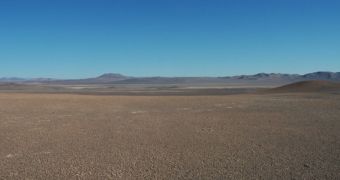According to the conclusions of a new study conducted by researchers at the Washington State University and the Arizona State University (ASU), it would appear that arid lands are capable of removing vast amounts of carbon dioxide from the atmosphere, much more so than scientists first estimated. This ability appears to increase as more CO2 is released in the air.
The finding is very important for the accurate modeling of global warming effects over the coming century, the national team of scientists says. Overall, arid lands represent one of the most expansive ecosystems on Earth, and they have now been shown to play a role in our planet's carbon cycle. Geologists have known that some rocks can store carbon, but were unaware arid soils do the same.
The consensus in the international scientific community today is that the excess carbon dioxide left in the atmosphere after carbon sinks such as oceans, forests, and lands store some of it leads to global warming and to climate change. However, the particularities of the carbon cycle and of Earth's climate budget have not yet been entirely deciphered.
Studies such as this are very important for the global effort to understand Earth's carbon budget, since any data collected in this manner will be used to improve forecasts and climate models. In addition, these researches could help experts come up with better methods of conserving existing habitats and of mitigating the effects of excessive anthropogenic CO2 emissions.
“This study has pointed out the importance of these arid ecosystems. They are a major sink for atmospheric carbon dioxide, so as CO2 levels go up, they’ll increase their uptake of CO2 from the atmosphere,” says WSU professor of biological sciences R. Dave Evans.
“They’ll help take up some of that excess CO2 going into the atmosphere. They can’t take it all up, but they’ll help,” adds the expert, who was the lead investigator on the new study. Details of the investigation were published in a recent issue of the top scientific journal Nature Climate Change.
The national team of scientists arrived at these conclusions after analyzing data collected during a 10-year experiment conducted in the Mojave Desert. Over the past decade, the group exposed portions of this arid region to elevated CO2 amounts, similar to what predictions say Earth will experience in 2050.
Recently, the group dug up to a meter (3 feet) underground, removing soils and vegetation to assess how much carbon dioxide became trapped in the ground. “The major effects of elevated CO2 levels were seen in the amount of carbon stored in soils, which was about 20 percent higher under elevated CO2,” says researcher Kiona Ogle, a member of the research group.
“Thus, desert soils, but not necessarily desert vegetation, are expected to sequester more carbon under a future CO2 environment. But, the soil carbon must come from some place, and it is likely that plants are ‘pumping’ this carbon from the atmosphere into the soils,” adds Ogle, who is an associate professor with the School of Life Sciences in the College of Liberal Arts and Sciences at ASU.

 14 DAY TRIAL //
14 DAY TRIAL //